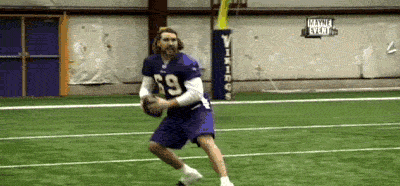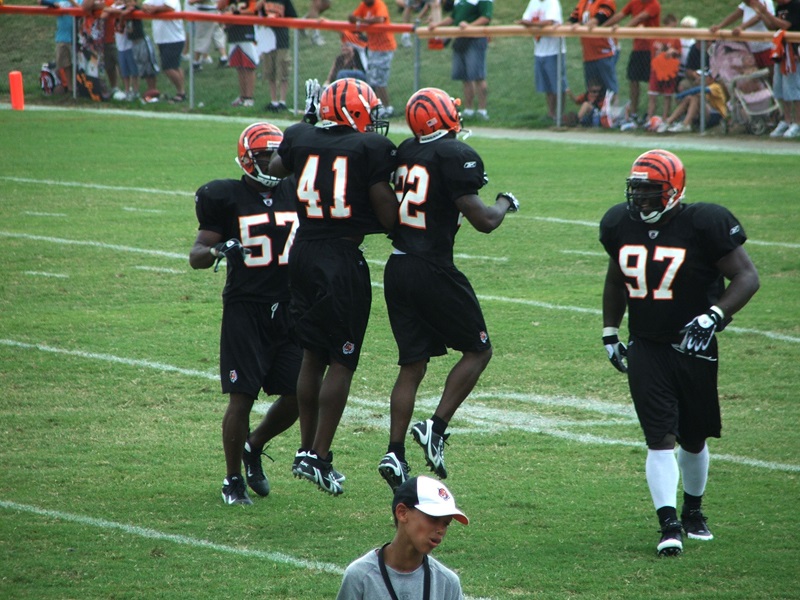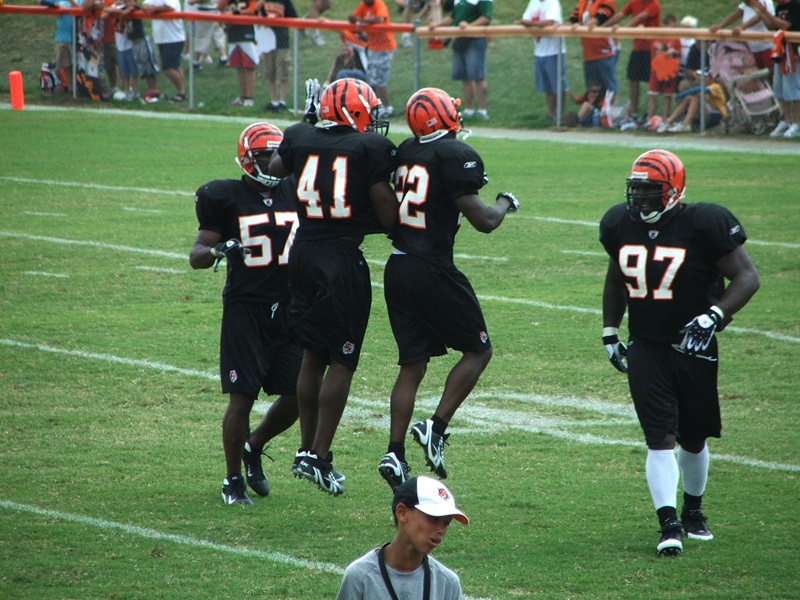
When I watch the Clemson receiver, I find myself in a mode of prayerful thought. I know it’s probably wrong to ask for something this selfish, but I want a player like Watkins on my team and if I have to resort to the good entity upstairs, well . . . that’s what crazy fans do, right?
Dear Lord,
Thank you for my health, my family, my job, and the strength and whatever wisdom I’ve gleaned to live each day. I don’t like to bother you with trivial things because I imagine you have far weightier concerns about what’s going on down here like all the wars we’re fighting, child slavery, famine, and corruption. Of course, this could all be some sort of divine machination like some philosophers believe and it’s all part of a grand plan.
If that’s the case I might just be wasting my time fretting to you about it. If they’re wrong, however, I’d like to make a miniscule request that, if it fits within the rhythm of the universe and doesn’t cause harm to anyone – perhaps with the exception of emotional damage to 49ers fans – I’m hoping you’ll make so:
Would you please have the Seattle Seahawks draft Sammy Watkins?
How tempting it is for me to make this a legitimate prayer. I find myself thinking it the more I watch Watkins – especially last night when I took in the Clemson-Florida State debacle. Devonta Freeman was impressive, Rashad Greene was scintillating, and Jameis Winston has been spectacular, but hands-down Watkins is the best wide receiver prospect in this draft class if he comes out.
I know some of you Pac-10 wonks will shout the refrain of Marqise Lee. You already have several times and I know there’s no medicine for your SoCal Tourette Syndrome. I agree that Lee is a good one But if Watkins is alongside Lee, I’m taking the Clemson Tiger in every scenario.
Catch Radius-Hands
[youtube=http://youtu.be/LvzmKM7cdeI]
This is a simple concept – a short cross – but the execution is far more demanding thanks to Tajh Boyd’s errant throw and Watkins’ underrated catch. A throw that’s low and away while on the run is one of the more difficult adjustments to make on a target. Watkins makes it look routine. Watch enough NFL games and this is the type of play that the average veteran in a starting lineup makes.
Then look at the presence of mind to get the pads downhill and make a beeline for the first down marker. Although we’ve seen Watkins make his share of defenders miss, he’s far more consistent at knowing when to dispense with the bells and whistles of agility and handle the primary job of earning the first down.
Here’s another underrated demonstration of catch radius on a slant for a touchdown – a play where a majority of NFL players in this situation drop the ball. Even top prospects entering the league drop this pass and get fans questioning whether the player really is all that good. Then, when they make the play the next week-month-year fans promptly forget that the capability was there all long. Watkins will likely be one of those players.
[youtube=http://youtu.be/iIEGWBcvHbQ]
Once again, an errant throw from Boyd (see a pattern) and Watkins has to lean the opposite direction of his break to extend his arms for the ball, make the catch, and hit the ground after contact. The consistent technique to extend his arms and catch the ball with his hands earns Watkins second chances in situations like the one above.
Route Depth and Boundary Awareness
These are two things that Watkins – once he gets acclimated to the advanced level of the NFL game – will make him a primary receiver for an offense. Watch this third-down play and note how he breaks to the quarterback, maintains good route depth, and makes the catch with great technique despite a defender draped on his back.
[youtube=http://youtu.be/YtivJhrJARM]
Moreover, look at Watkins drag his feet. The receiver’s ability to integrate all of these skills into one play is an indication that Watkins has ingrained many of these techniques into his game with hard work. This is advanced receiving. Watkins is a receiver I expect to have a productive rookie year.
Physicality
This block is hard to see and it’s a play that catches the cornerback by surprise. Still, I love Watkins’ hustle.
[youtube=http://youtu.be/xIGgl-8IJN4]
It’s a great punch with good location and away from the flow of the play. It’s one of several small indications that I’ve shown that Watkins not only likes to play the game he likes to work at it. Combine that with great athleticism and natural gifts and just imagine the versatility the Seahawks would have with Percy Harvin, Golden Tate, and Sammy Watkins.
It probably won’t happen, but a man can hope, right? What I do know is that the team that gets Watkins will have some major prayers answered.
For analysis of skill players in this year’s draft class, download the 2013 Rookie Scouting Portfolio.The 2014 RSP will available April 1 and if you pre-order before February 10, you get a 10 percent discount. Better yet, if you’re a fantasy owner the 56-page Post-Draft Add-on comes with the 2012 – 2014 RSPs at no additional charge and available for download within a week after the NFL Draft. Best, yet, 10 percent of every sale is donated to Darkness to Light to combat sexual abuse. You can purchase past editions of the Rookie Scouting Portfolio for just $9.95 apiece.










